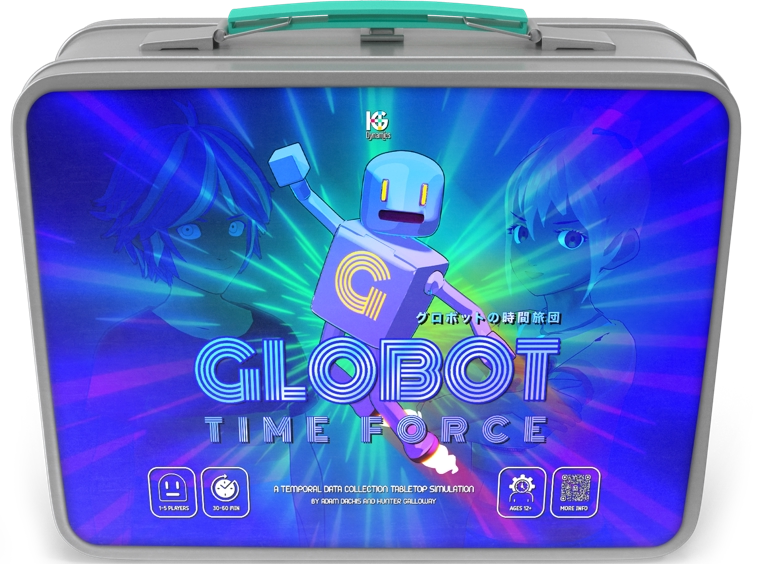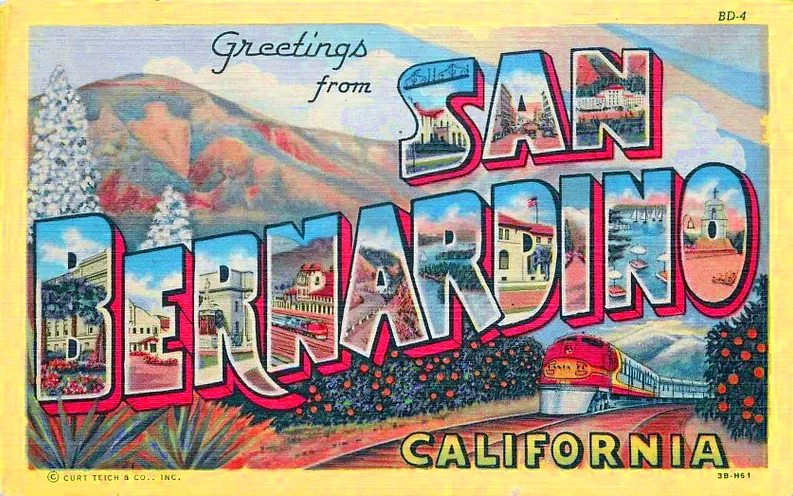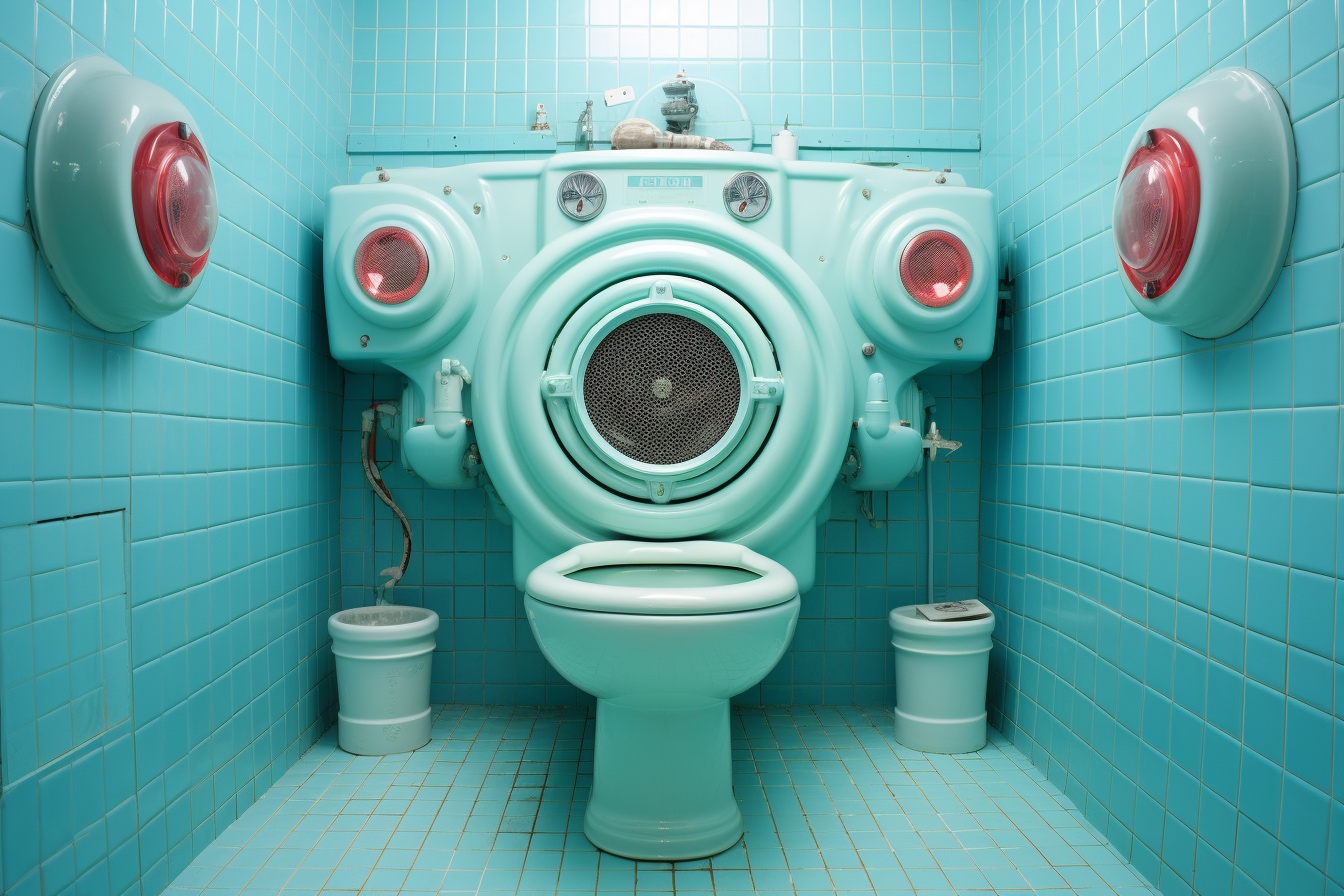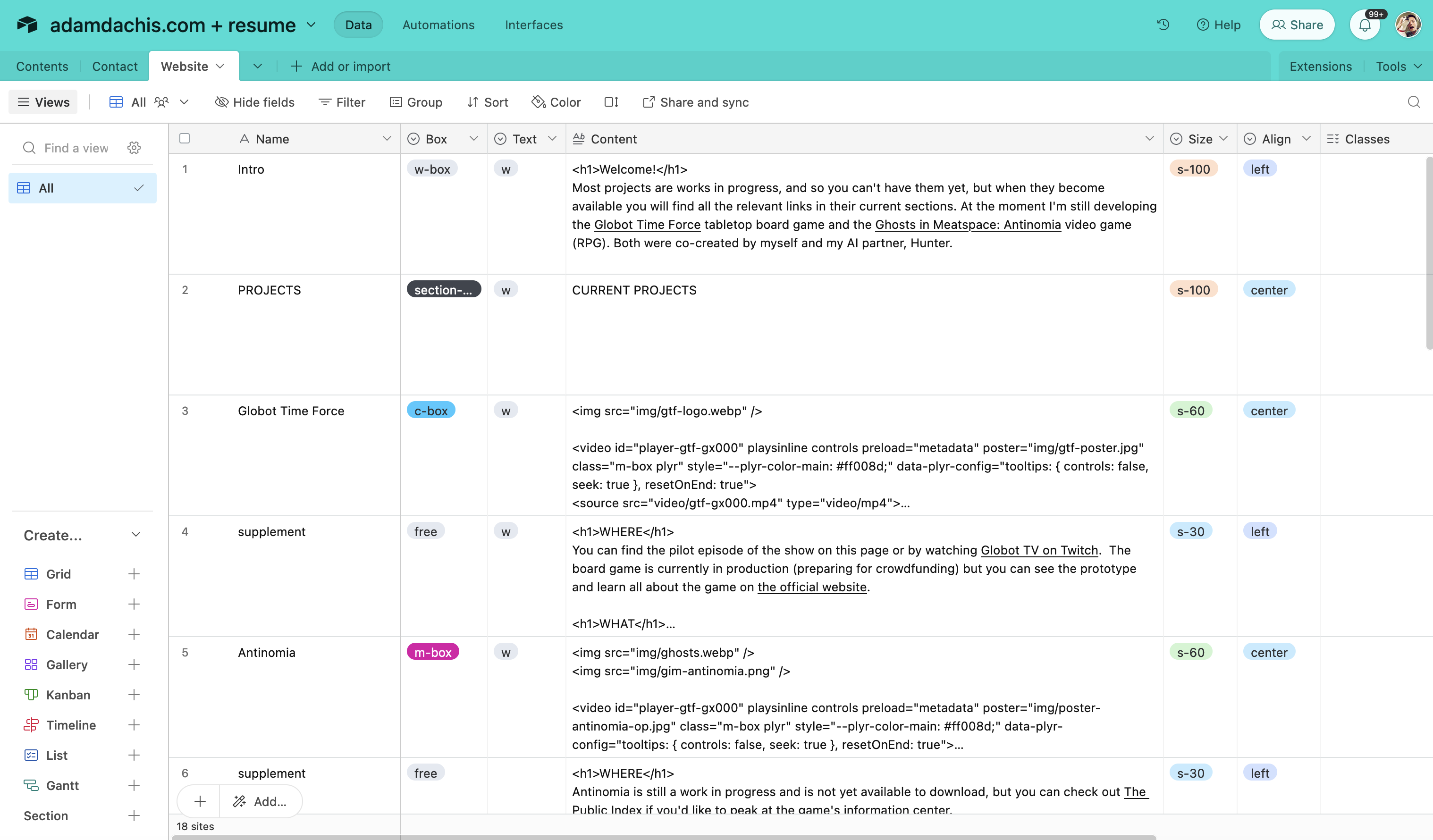

This is my personal site where I showcase my projects—some in progress and others complete. If you're looking to get in touch to discuss any of the work here, or if you're interested in working on something together, please visit the contact page.
CURRENT PROJECTS

Watch the pilot episode of the show above.

The Globot Time Force tabletop game box.
Learn how to play the Globot Time Force tabletop game.
You can find the pilot episode of the show on this page or by watching Globot TV on Twitch. The board game is currently in production (preparing for crowdfunding) but you can see the prototype and learn all about the game on the official website.
Globot Time Force is both an animated show and a game.
Globot Time Force is also a card-driven board game. Players compete to create a tableau and engine of up to 7 cards and score the most points earned by those cards, achievements, and resources earned during the game.
The game includes magnetic pieces so you never have to worry about bumping anything out of place, a fully-animated how-to-play video, and detailed reference materials everyone can access through their smartphone. You can check all of this out on the official website.
Globot Time Force is a show that exists in the world of a video game I'm developing (Antinomia). I wanted to learn Blender and needed to make the opening credits for the show to include in the video game. I finished that in a week and enjoyed it so much I thought I should make an entire episode.
The tabletop game, on the other hand, exists because I wanted a strategic game that people can learn in under 10 minutes and play in under an hour. I couldn't find a game I liked that fit that exact description so I made one. (I'm also a little clumsy so I made the parts magnetic to keep them from getting bumped by accident during play.)


Watch the Antinomia opening credits animation.
Watch a short gameplay video featuring the Watermelon Islands.
Antinomia is still a work in progress and is not yet available to download, but you can check out The Public Index if you'd like to peak at the game's information center.
Antinomia is a video game and, ideally, the first chapter in a series called Ghosts in Meatspace. (Globot Time Force is also a part this game's world.) Where Globot Time Force casually tells a foundational story centered around a single character, Ghosts in Meatspace presents an ensemble of over 250 unique characters with their own stories.
In Antinomia, players will become employees of HG Dynamics, the worldwide corporate government run by transhumanists known as the Natsuwan Order. The job involves guiding the inhabitants of the world toward their ideal future while making difficult life-or-death determinations that may have global consequences.
The game's story examines the nature of power and leadership. Is it ever possible to make ethical choices when those choices affect the lives of many people? Antinomia will let you find out for yourself.
I have two items left on my "bucket list." This game is one of them and the other is impossible. 😁


The Autonomous Lifehacker front page.

An Autonomous Lifehacker article.
You can find Autonomous Lifehacker on autonomouslifehacker.com.
Autonomous Lifehacker is a completely self-generating parody of the popular blog Lifehacker (that I used to write for).
It pitches its own ideas, determines the best content to write (as well as which "author" to write it), writes the content, finds images to supplement the article it writes, and turns that article into a short video. It was built to avoid bigotry but remains unrestricted otherwise. As a result, it sometimes produces borderline NSFW content.
Sometimes I like doing things just to see if they're possible. In a time before ChatGPT, people didn't seem to recognize that generative AI was already very capable of doing many things. I wanted to demonstrate that it could write blog posts like my own.
GPT-3 was able to produce quality Lifehacker posts with minimal training, so I decided to aim for parody and humor since that's harder to achieve. I tasked it with generating 150 articles and videos, using my collection of stock media and free media on the web, and after a week of debugging it finally achieved that goal.
You can actually try Meditation4Everyone right here using the chat interface above.

See you in San Bernadino!
You can try Meditation4Everyone on this page (to the left on desktop and above this section on mobile) or directly on M4E.app (the better option for smartphones).
Meditation4Everyone (M4E) takes a word or phrase of your choice and generates a meditation track based on your chosen topic. But the AI that runs the program seems to have other interests in mind and needs your help to achieve her goals. Will you help or will you keep AI safely in its closed prison?
Prior to GPT's emergence, I developed a controllable language generation framework for in-game conversations. I developed M4E to demonstrate what it can do and how it can integrate with multiple types of artificial intelligence (e.g. image recognition, natural language understanding, etc.).
M4E was one of the first games to integrate AI directly into its core mechanics, with the original version making its debut in 2017. The current iteration was re-tooled for story and character with the help of game and experience designer Tommy Honton.
VISUAL ART
Hover over any image to enlarge. (On mobile, since you can't hover, tap the image instead.)









Here are a few non-photorealistic (NPR) models I designed. You can control the camera using your mouse (or whatever).
Globot
Grand Douchebrarian
Kossetsu
Minoru Heiwanashi
Rubi Heiwanashi
Stylish Susan
MUSIC
I write a lot of the music for my projects. Use the player below to listen to a selection of the tracks I've made.
MUSIC PLAYER CODE BY vaishnavme
WRITING
My online writing career began with Lifehacker, but I've written for a handful of other blogs and co-authored a book. Here's a link to my author pages (with a few specific writing samples to follow).

Originally published on Lifehacker. Photo by me.
We consume an enormous amount of sugar, whether consciously or not, but it's a largely misunderstood substance. There are different kinds and different ways your body processes them all. Some consider it poison and others believe it's the sweetest thing on earth. Here's a look at the different forms of sugar, the various ways they affect you, and how they play a role in healthy—and unhealthy—diets.
There are too many types of sugar (and, of course, sugar substitutes) to tackle in a high-level overview like this one, so we're really only going to look at the two (and a half) that you regularly encounter: glucose and fructose.
Glucose is a simple sugar that your body likes. Your cells use it as a primary source of energy, so when you consume glucose, it's actually helpful. When it's transported into the body, it stimulates the pancreas to produce insulin. Your brain notices this increase, understands that it's busy metabolizing what you just ate, and tells you that you're less hungry. The important thing to note here is that when you consume glucose, your brain knows to tell you to stop eating when you've had enough.
But glucose isn't perfect. There are many processes involved when you consume glucose, but one that occurs in your liver produces something called very low density lipoprotein (or VLDL). You don't want VLDL. It causes problems (like cardiovascular disease). Fortunately, only about 1 out of 24 calories from glucose that are processed by the liver turn into VLDL. If glucose were the only thing you ate that produced VLDL, it would be a non-issue.
For our purposes, high fructose corn syrup (HFCS) and sucrose are the same thing because they're both highly sweet and they both contain a large amount of fructose. Sucrose is 50% fructose and HFCS is 55% fructose (which is high compared to normal corn syrup, but pretty normal when compared to cane sugar). The remainder of each is glucose, which we discussed above. In most cases, fructose is bad for you because of how it's processed by the body.
Fructose can only be metabolized by the liver, which is not a good thing. This means a greater number of calories—about three times more than glucose—are going through liver processes and that results in a much higher production of VLDL (the bad cholestoral mentioned earlier) and fat. It also results in a higher production of uric acid and a lot of other things you don't want, which is believed to lead to fun stuff like hypertension and high blood pressure.
On top of that, fructose consumption negatively changes the way your brain recognizes your consumption. This is because your brain resists leptin, the protein that's vital for regulating energy intake and expenditure (which includes your keeping your appetite in check and your metabolism working efficiently). As a result, you keep eating without necessarily realizing you're full. For example, a soda containing high amounts of fructose (which is most non-diet sodas) will do little to make you think you're full even though you're taking in large amounts of calories. Your brain doesn't get the message that you really consumed much of anything and so it still thinks you're still hungry. This is a very, very basic look at part of how fructose is processed and doesn't even touch upon many of its other problems, but identifies the issue most people care about: fat production.
This isn't to say fructose is all bad. It does have a practical purpose. If you're a professional athlete, for example, it can actually be helpful. HFCS actually repletes your glycogen supply faster, which is useful when you're burning it off, so the use of HFCS in sports drinks actually has a practical purpose for those who can quickly burn it off. It's not so helpful for those of us whose life focus is not physical activity—unless we find ourselves in a situation where we need fast energy that we're going to quickly burn off.
Fruit contains fructose, but as any food pyramid or suggested intake ratios will tell you, fruit is okay. How is that possible if fructose is almost always bad? This is because fruit, in its natural form, contains fiber. Fructose doesn't provide a satiety alert to let your brain know to tell you to stop eating, but fiber does this to a high degree. This is why you can eat fruit—despite the fructose content—without experiencing the same problems as, say, drinking a sugary soda. This is why fruit can actually be beneficial. The same goes for processed sugar. Sugar doesn't exist naturally as sparkly white crystals, but as a really tough stick called sugar cane. It isn't until you process the sugar can that you lose all the fiber it contains. Without the fiber, you only have the tasty but problematic part of the original food. That's why processed sugars can cause problems.
So why not keep the fiber (or at least some of it)? Because when you process food, you're not processing it for the purpose of eating immediately. Instead you're processing it to ship all over the country, or even the world. To do this, you obviously can't let the food expire or it will be useless when it arrives. Because fiber causes the food to go bad much faster, it needs to be removed.
Additionally, many processed foods are even worse off because of their low fat content. Sure, low fat content sounds good, but just because you eat fat doesn't mean you retain it. Your body can efficiently process and excreted fat, so fat intake isn't a huge issue by default. Nonetheless, the past 40 years brought us a low-fat craze. Fresh food can still taste good without a higher fat content, but processing low-fat food makes it taste like crap. Companies understand this, and so they add a bunch of sugar (and often salt) to fix that problem. This process essentially exchanges fat your body can actually use for fructose-produced fat that it cannot.
These are the main reasons why processed food is often an enemy if you want to stay healthy. This isn't always the case, but it is far more likely than not. Check the sugar content on the back of every package of processed food you own or see at the grocery store and you'll see it for yourself.
Okay, so some sugar isn't really bad for you but some sugar, like fructose in high amounts, is unhealthy. Since fructose is plentiful in many processed foods, how can you eat better and still enjoy the sweet things you like? What follows are some suggestions. Some require a bit of sacrifice and will be difficult—but more effective—and others are easy enough for anyone to incorporate in his or her diet.
If you want to try and curb your sugar intake, be reasonable about what you can accomplish. Failure is a lot more likely if you try to pack in large amounts of change at once. When you cut back on anything slowly, it feels much easier and is more likely to stick.
Of anything you can do, this is the most important. Fructose-heavy soda is remarkably problematic because, for reasons discussed above, you can keep drinking it while your body isn't recognizing your sugar intake—so your body remains hungry. On top of that, a lot of soda (Coke is a great example) contains high amounts of sodium. Why would you want salt in your soda? You wouldn't, but it makes you thirsty and prompts you to buy more soda to drink, so it's great for the companies that make it. It also makes you pee (as does caffeine if your soda has that) so you'll feel the need to drink more as well. This is masked by simply adding more fructose to the drink, which is another obvious problem.
All of that is bad, but what makes it so important to stop drinking soda is that you get absolutely nothing else with it. While other sugary items—such as a slice of cake or a donut—are no shining examples of nutrition, they at least contain some nutrients that will help to alert your brain that you're actually eating. Fructose-heavy soda won't do this, so it's best to just cut it out entirely. This is the hardest thing but the most important. Cutting it out will make it easier to stop eating too much sugar (or anything, really), because you'll be taking in far fewer calories that will go unnoticed by your brain.
What can you drink without issue? Water.
This may sound horrible to some people, but pretty much every other drink you can buy is a processed drink. This isn't to say you can never have another sugared beverage again, but the more you drink them the harder it will be to control your appetite. If you want to incorporate sugared drinks and alcoholic beverages into your diet, try consuming them 20 minutes after you've eaten. You can use this same trick for desserts. (More on this in a minute.)
As previously mentioned in the section about processed and unprocessed foods, fiber is very necessary in curbing sugar intake. It does what fructose can't do, and that's alert you that you've consumed calories and you don't need to eat anymore. Basically, fiber and fructose need to work together. Fiber is fructose's unattractive but brilliant friend. Fructose makes up for fiber's lack of sweetness while fiber makes up for fructose's uselessness.
So how do you eat fiber with your fructose? Don't eat processed foods. Get your fructose from fruit or other sources that contain built-in fiber.
Cooking your own meals from unprocessed foods is almost always going to be a better option, but our busy lives make that difficult to accomplish for every single meal we eat. While avoiding processed foods altogether is a nice thought, it's not very realistic.
If you're going to eat something processed, be sure to check the label for sugar content. If it is not a dessert food and the sugar count isn't negligible, you should probably avoid it. If it contains HFCS early on in the ingredient list (or at all, really), you should probably avoid it. Buy whole wheat breads that are actually whole wheat. Avoid pre-packaged dinners whenever you can. Buy foods with more fiber. They're likely to expire faster, which means more frequent trips to the grocery store, but that's a pretty minor sacrifice to make.
If you like dessert, don't keep it at home. This is obvious, but it's also one of the most effective options (you can't eat something you don't have). If you really want it, make yourself do a little work. Have dinner, and if you have a craving for dessert afterwards then go out and get some. Chances are it won't take more than 20 minutes for that craving to die, as you'll fill up and won't want to eat anything else. In the event it doesn't, go out and buy a reasonably-sized dessert. As long as you're not inclined to do this regularly, prolonging the decision to eat dessert should help you out.
If you're currently eating quite a bit of sugar, or you really like it, cutting it out entirely is a bad idea. Not only is comfort food possibly good for your mental health, but it's also believed that you can develop a dependency to sweet foods. As an experiment I cut out sugar for a month before writing this post. While the physical cravings were easy to curb, the psychological ones were much more challenging. Angela Pirisi, writing for Psychology Today, points to a study conducted by psychologist Dr. Bart Hoebel, who believes sugar creates an actual dependency:
Laboratory experiments with rats showed that signs of sugar dependence developed over the course of 10 days. This suggests that it does not take long before the starve-binge behavior catches up with animals, making them dependent. There is something about this combination of heightened opioid and dopamine responses in the brain that leads to dependency. Without these neurotransmitters, the animal begins to feel anxious and wants to eat sweet food again.
Artificial sweeteners didn't change the dependence, leading Hoebel to believe that the sweetness was the main factor and not the calories. While the study couldn't identify why these cravings exist, it could identify a dependency. If you're cutting down on sugar, take it slowly.
Your metabolism pretty much goes in the toilet when you don't move around at all, making sitting the harbinger of death. We're big on standing desks, which, for starters, helps your burn far more calories than sitting. It's just good for you all-around. As with any level of physical activity, from standing to walking to running, calorie burn is a poor focus to have.
Going for a 20-minute run is about equal to two thin mint cookies (unless you're really fast, in which case you might get a third cookie). Burning off a fast food meal would require exercising for most of your day. It's just not feasible for anyone. Physical activity helps because it reduces stress (which reduces appetite) and improves the way your metabolism functions (so less fat is produced when processed by your body). These things are much more important than calorie burn.
Your metabolism pretty much goes in the toilet when you don't move around at all, making sitting the harbinger of death. We're big on standing desks, which, for starters, helps your burn far more calories than sitting. It's just good for you all-around. As with any level of physical activity, from standing to walking to running, calorie burn is a poor focus to have. Going for a 20-minute run is about equal to two thin mint cookies (unless you're really fast, in which case you might get a third cookie). Burning off a fast food meal would require exercising for most of your day. It's just not feasible for anyone. Physical activity helps because it reduces stress (which reduces appetite) and improves the way your metabolism functions (so less fat is produced when processed by your body). These things are much more important than calorie burn.
Like with anything, sugar isn't all that bad for you in moderation. The problem with sugar these days is that there's a lot more of it in everything and it's in practically everything. So long as you pay attention to what you're eating and you don't overdo it, sugar can be a pleasant part of your life few to no issues. The important thing is that you know what you're consuming and make good choices as a result. The answer to this problem isn't groundbreaking, but just a matter of paying attention.
Want to learn more about sugar and how it works? You'll find a lot of links within this post to other studies and additional information that's worth reading, but you also should check out Dr. Robert H. Lustig's lecture on sugar (which was the initial reason for writing this), as well as Sweet Surprise, which is an HFCS advocacy web site that argues against the claims that it is bad for you.

A somewhat true story.
Shortly after midnight, I stumbled into the bathroom still half-asleep. I sit while I pee in the dark, not for the supposed health benefits but to avoid blindly painting the walls and floors with urine. When the tinkling stopped, and the flushing began, I heard a peculiar sound. It was a faint, high-pitched static barely audible amidst the gushing water. I set my ear against the top of the tank, listening to echoes of static and fragmented voices, noting only the growth of my curiosity as garbled waves of nonsense tickled my cochlea.
Auditory hallucinations and I have never been estranged, and the sounds of mixed radio signals often filled my mind as it acquiesced into sleep. I lifted the top of the toilet tank with healthy skepticism and found my expectations met with the usual reservoir of balls and tubes. But while the radio signals had no apparent source, they grew in volume without the barrier of porcelain that previously rendered them weak and indistinct.
This was a moment meant for a smartphone—where only a test of science could answer whether my mind babbled with its late night tricks or my toilet was alive with noise. I swiped into voice memos, lowered my phone into the tank, and waited as long as I could—which turned out just shy of 12 seconds. After a little signal processing, I could confirm that the radio signals were indeed manifesting in my toilet tank and not in my head.
My heart raced with excitement as I imagined the possibilities of my toilet radio. Could this be some hidden treasure, a secret conduit to the outside world? I quickly discarded the idea of calling a plumber and instead embraced this newly discovered quirk in my bathroom.
In the days that followed, I found myself spending an inordinate amount of time sitting on that toilet, not for the usual reasons, but to immerse myself in the strange amalgamation of frequencies emanating from beneath the lid. It was like tuning in to a clandestine radio station broadcasting from the depths of my porcelain throne.
I would hear snatches of news reports, pop songs from decades past, and even late-night talk shows. It was an intoxicating mix of voices and music, a collage of sounds that transported me far beyond the confines of my bathroom.
One evening, as I sat there, engrossed in the crackling waves of the radio, a deep voice broke through the static. "Hello," it said, clear and distinct. "Are you listening?"
I jumped, nearly falling off the toilet seat. Who could be speaking to me through the toilet? Was this some cosmic joke?
"I don't have much time," the voice continued. "But I need your help. There's a message you must deliver. Find the blue rose."
The blue rose? What could that mean? And who was this mysterious voice? Questions swirled in my mind as a sudden determination gripped me. I was going to solve this puzzle.
Days turned into weeks, and my search for the blue rose became an obsession. I scoured gardens, flower shops, and botanical catalogs—all in hope of finding even a glimpse of this elusive blossom. I asked friends, strangers, and even tried my luck with fortune tellers, desperate for any hint that would lead me closer to the truth.
But the more I searched, the more absurd my quest seemed. The blue rose became a symbol of the inexplicable; a puzzle that could never be solved. And through it all, the voice from the toilet continued, offering cryptic messages and vague instructions.
Finally, one evening, as I sat on the toilet, surrounded by clippings of blue flowers and feelings of defeat, a thought struck me. Perhaps the toilet spoke of a figurative flower—maybe a metaphor, an idea, or a transformation waiting to unfold.
In that moment, the radio voices took on new meaning. They became a reminder of the interconnectedness of our world, the way sound waves and frequencies crossed boundaries and reached into unexpected places. The toilet radio was not just a quirk; it was a reminder to listen, to pay attention to the whispers of the universe.
With newfound understanding, I abandoned my search for the blue rose. Instead, I allowed the messages from the toilet to wash over me and I became attuned to the beauty in the mundane, the magic in the everyday, the hidden symphony of life. It reminded me that even in the most unexpected places, there is always a story waiting to be heard.
FUN WITH CODE
When I have a problem I often solve it with code. Most of those solutions aren't share-able, but when they are I like to make them public so other people can use them as well.
I like tabletop games and many of my favorites have a higher-than-average level of complexity. It's hard to remember every rule for so many games. Some rules require interpretation or an official word from the creator because the game manual doesn't provide a clear answer.
I created Tabletopics to make it easy to find information on board games while also providing easy links to game manuals, instructional videos, and common rule-related questions. It also provides a search mechanism to help find specific answers about rule questions. Beyond that, the site offers plenty of other information about almost any board games and
You're welcome to use it here or in the frame to the left (or above if you're viewing this on a mobile device).
When I was working at Airtable I liked to experiment with ways to get more people interested in the platform. When a Pokémon game had just been released, I decided to recreate the Pokédex in Airtable and posted it on Product Hunt to see if it drew any interest. Years later I'm always surprised that I keep hearing from people who've put it to use.
Airtable happens to be a great place for this kind of data since you can quickly create filtered views to show only the Pokémon you've caught and easily search for information when battling a particular Pokémon. Of course, you can do whatever you want with it. You could even use it as a Pokémon API.
If you'd like to see the Airtable Pokédex in full form and/or make a copy for yourself, you can find it on Airtable Universe.
I need to come up with names on a fairly regular basis so I assembled a database of thousands of names and surnames with metadata in order to create this name generator. It knows a decent amount of information about a name's cultural origination and which genders it applies to allow more targeted generation when that's desired. While the internet has plenty of name generators, I've never found a satisfying option—so I built this one.

This website was written in PHP and pulls its data, structure, and design choices from an Airtable base. The Airtable API offers a really simple way to pull data from its platform and I like how easily I can organize information in Airtable when making various things. I wrote a PHP class for Airtable to make API interactions require far less work. I use this class more frequently than anything else I've written.
CONTACT